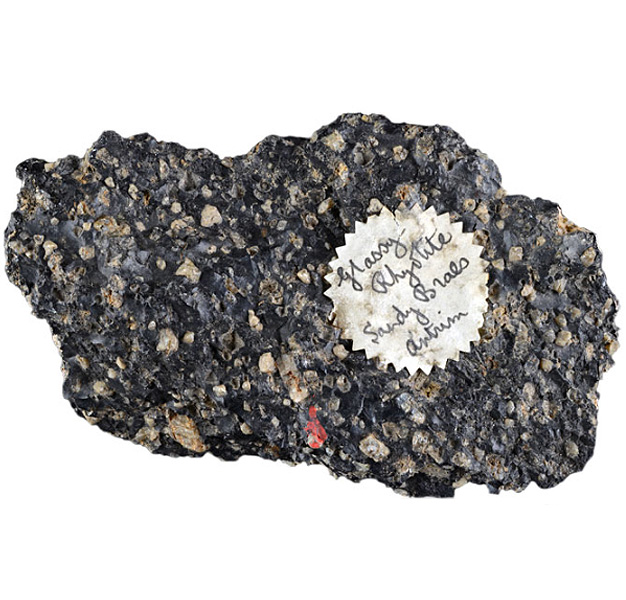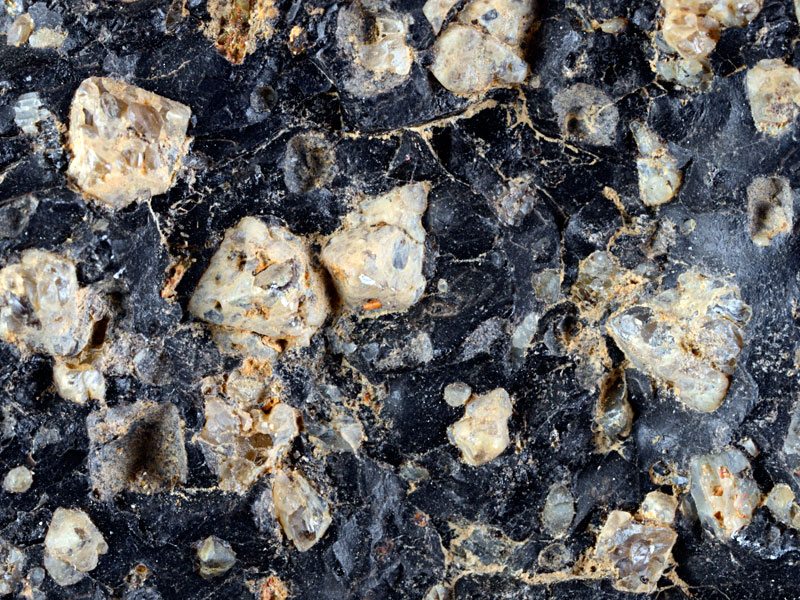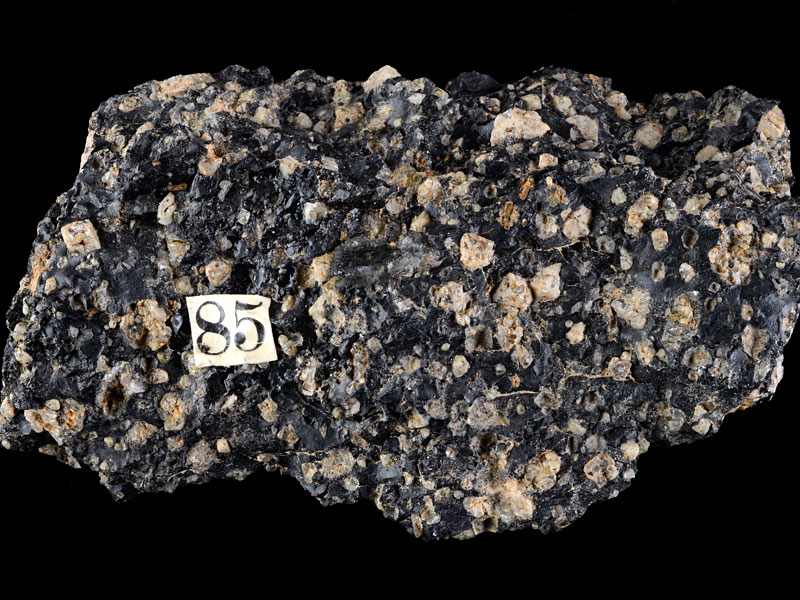
Fact sheet
This obsidian glass sample comes from a small quarry in County Antrim, Northern Ireland. It is part of the Tardee volcanic complex, which in turn is part of the North Atlantic volcanic province that erupted in the Paleogene. This locality is one of the few examples of such acidic volcanic rocks in the Paleogene rocks of Ireland and contains a range of rhyolite and agglomerate rocks that were contemporaneous with local basalt eruptions. The rock chemistry implies that it formed by fractional crystallisation from a basaltic magma, although evidence from strontium isotopes indicates the magma was contaminated by local crustal rocks. The rocks are preserved as a glass rather than crystallising to a more coarse-grained rock by rapid cooling.
In thin section it is clear that the rock is not pure glass but a fine-grained matrix of glass and randomly oriented feldspar laths less than 50 microns long. The glass is isotropic (black in crossed polars), whereas the feldspars exhibit low order birefringence colours. Also visible are large phenocrysts of sanidine, a potassium-rich variety of feldspar found only in volcanic rocks.
The United Kingdom Virtual Microscope (UKVM) collection consists of igneous, sedimentary and metamorphic rocks from around the UK.
It is intended as a teaching resource, helping to tell the story of the common rock types and how they form, and reflecting the history of the UK at the margins of the continent of Europe. The collection is a series of teaching sets, for example igneous rocks from the North Atlantic Igneous Province and SW England; high-temperature metamorphic rocks from Scotland and low-temperature metamorphic rocks from Wales; and sedimentary rocks, including English limestones and sandstones.








